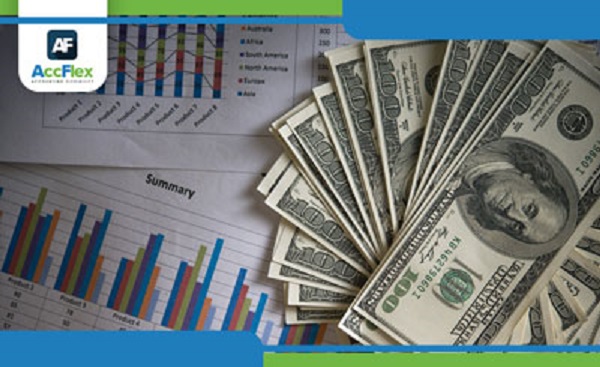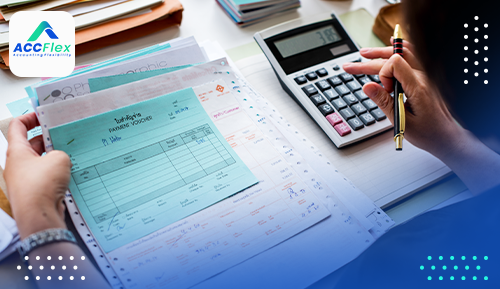The financial analysts' point of view, that the working capital is the difference between a company’s current assets, such as cash, convertible securities, inventories, and accounts receivable, and its current liabilities, and there is an accounting point of view that the working capital is equal to current assets
Working capital management is concerned with any decision affecting current assets and liabilities and working capital management involves planning and monitoring cash flow between all working capital accounts and also the rest of balance sheet accounts to ensure that the liquidity component is available and the decisions it makes, the company must be set at an appropriate level for each of the working capital accounts, to increase the company's profitability and working capital management, it must make the right funding decisions
Working capital is the lowest level of current assets that the company must keep in the sense of a certain level of working capital that cannot be less than it in order to cover the company's liabilities and permanent working capital must increase with the growth and increase of the size of the company and permanent working capital is generally financed through long-term debt because short-term debt financing has great risks and this is because of the possibility that current assets will not be converted into cash, their short-term debt-paying inability, high-interest rates, inability to renew loans, and the large size of net working capital i.e. the more positive, which is a preliminary indicator that things are more positive and safer for the company, but it is necessary to analyze the working capital line items, each line item separately, for example, the accounts receivable balance is a component of the current assets, meaning that is the accounts receivable balance figure at the optimum level for the company, or is it high as a result of slow and weak collections in the company which leads to poor liquidity of the company, also, the inventory accounts must be analyzed with their levels of raw materials, picking, packing, and work-in-progress to see if they are in the optimum inventory levels of the company to find out if there is stagnation and spoilage in inventory balances with large values, and the situation is also for other debit balances and is there increase dramatically from previous periods, as well as the cash on hand and bank accounts should be at the optimum level for the company so that it does not increase and becomes idle funds instead of investing it, it brings a return of the company or less than the company's needs to meet its liabilities, thus make the company in a bad situation in the market
The movement of current liabilities must be analyzed at the level of their line items and their trend, upward or downward, and find out the reasons for that, such as current liabilities increase as a result of increased movement of the provision of the company to predict the occurrence of certain liabilities of the company or vice versa, for example, increase in current liabilities as a result of transferring portion of long-term liabilities (non-current) to current liabilities such as loan installments
Increase the company's accounts payable and creditors' balances as a result of the company's success in getting a longer payment period from the suppliers and vice versa, also, net working capital must be analyzed at close periods and knowing reasons for its high and low from than healthy net working capital position and each company have net working capital based on the size and position of the company
The effect of decreasing working capital from its normal ratio
Problems paying the company current liabilities, which leads to the company losses
- The decrease in working capital leads to missed opportunities for the company to finance the company's expansions
- The company is unable to finance its inventory needs at the specified times, which leads to problems in customer requests delivering, etc.
The company is unable to pay dividends, especially in joint-stock companies, which leads to avoid investing in the company
The decrease in working capital leads to a decrease in current assets than their normal rates for each company, which can lead to financial distress or bankruptcy
The effect of increasing working capital from its normal ratio
The increase in working capital means that the company maintains current assets dramatically, which means that a large part of the company's funds is suspended from investment and thus depriving the company of investment returns and perhaps the increase in working capital leads companies managements to commit financial mistakes under the pretext that the net working capital is high, it may be in a bad way and the company determines the size of the working capital required for it based on examining all the changes that are expected to occur to the company at different periods and using indices to express the relationship between working capital for the current period and previous fiscal periods
There is a strong relationship between working capital and the company's operational capacity to know the project's need in the future, as well as the funds necessary to finance investments in current assets, and this requires the company to increase the volume of investments in the long-term assets as it is necessary to increase investments in current assets and this means increasing investments in working capital
Working capital or net working capital is not considered a performance comparison indicator for different companies, but it is one of the internal control measures, and in most cases when the company concludes agreements with banks on long-term loans, the banks require a certain level of working capital to cover and ensure the continuation of operations within the company, these procedures are considered to protect the lenders from any financial distress
Types of working capital policies
First, Aggressive Policy
When the company wants to invest in large amounts in any line item of current assets such as inventory and reduced investment in other line items for many reasons, including the ability to face demand increases in inventory if there is increasing sales forecasting to achieve the highest profit possible, but the increase in inventory is also offset it increase in inventory costs, in addition to, the opportunity cost of the money invested in the inventory, there are also storage and insurance costs, spoilage costs, and the possibility of having stagnant inventory
Second, Conservative Policy
The conservative policy means investing money in current assets in a balanced and moderate manner, and has sufficient cash balance and all elements of working capital of inventory and accounts receivable, are at a level appropriate to it according to its importance and enables it to distribute investments on line items of current assets based on the importance of each line item and its relative weight and change the amounts of each line item in the light of its importance to ongoing activity and work through it, increase sales and profit and this policy makes liquidity ratio and trading is high
Operating Cycle
It is the amount of time inventory sits in storage + accounts receivable period. This will be in commercial companies, but in manufacturing companies, it is the average period of time required for a business to make an initial outlay of cash to produce goods, sell the goods, and receive cash from customers in exchange for the goods. For example, real estate investing differs from industrial activity investing, from agricultural activity investing or commercial activity, each activity has a cash cycle and the cash conversion cycle (operating cycle) in short is the time required to invest cash and return it to cash
As for the commercial field, it is inventory period + accounts receivable period – accounts payable conversion period
As for the supermarkets, for example, its operating cycle is the shortest, as it is inventory period– accounts receivable period only
Also, the assets are evaluated by the degree of their liquidity based on their transferring into liquidity after many procedures
Liquid cash and bank accounts are the fastest
While deposits and investments need a liquidation step to convert them into available cash, while accounts receivable need to collect, whether it is cash or check collection, then convert checks into cash, while the inventory needs to be sold in cash to customers and then collected from the currency and each of those steps has a time to move to another step
Determining the operating period helps the company in determining the size of working capital required for it
Working capital = Current assets - current liabilities
The recognition of an asset or current liability if it expected to get it and maturing within 12 months or the operating cycle, whichever is greater i.e., if the operating cycle in a certain industry of 15 months, for example, depending on the nature of the industry are assets considered which can be converted within of 15 months current assets as well as liabilities maturing within 15 months as current liabilities
And if the operating cycle is, for example, 9 months / the operating cycle is not considered 9 months because it must not be less than 12 months in classifying assets and liabilities as current (IAS 1)
Cash Conversion Cycle
= Operating Cycle – Accounts Payable Conversion Period
Operating Cycle = Inventory Period + Accounts Receivable Period
1- Inventory Period is the amount of time inventory sits in storage until sold. Where Inventory Period = Number of Days in Period / Inventory Turnover
First, Inventory Turnover is calculated and is equal to Cost of Goods Sold / Average Inventory (Beginning Inventory + Ending Inventory)
Number of Days in Period= the amount of time in which is calculated let say 90 or 180 and are divided by Inventory Turnover
2- Accounts Receivable Period = Number of Days in Period / Receivables Turnover
First, Receivables Turnover is calculated = Net Credit Sales / Average Accounts Receivable (Beginning Accounts Receivable + Ending Accounts Receivable)
Number of Days in Period= the amount of time in which is calculated let say 90 or 180 and are divided by Receivables Turnover
3- Average Payment Period = Number of Days in Period / Accounts Payable Turnover Ratio
Accounts Payable Turnover Ratio = Total Credit Purchases / Average Accounts Payable (Beginning Accounts Payable + Ending Accounts Payable)
Number of Days in Period= the amount of time in which is calculated let say 90 or 180 and are divided by Accounts Payable Turnover Ratio
The smaller the cash cycle, the higher the liquidity of the company, and the longer the cash cycle, this indicates a lower liquidity of the company
Cash Turnover Ratio= 90 or 180 or 360 / Cash Cycle
The higher the cash turnover ratio, the higher the liquidity of the company and its ability to invest cash well and vice versa
Financial Failure & Financial Distress
Technical Insolvency: is that the company is unable to meet its needs current expenses, even though its current assets exceed its current liabilities due to the decrease in cash and the increase in accounts receivable balances as a result of the weak collection movement, the increase in inventory balances and the high cost of loan interest from banks or the expansion of the company in investments in long-term assets and overcoming the technical insolvency by either liquidating some of the assets
Real Insolvency: occurs when the company's current assets are less than its current liabilities, i.e. working capital is negative, and thus you the company is unable to pay its liabilities, which leads to the company’s bankruptcy and liquidation and so that this can be overcome by capital restructuring and re-evaluating its assets, especially in the event of an increase their prices










